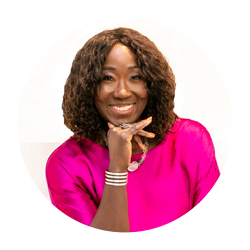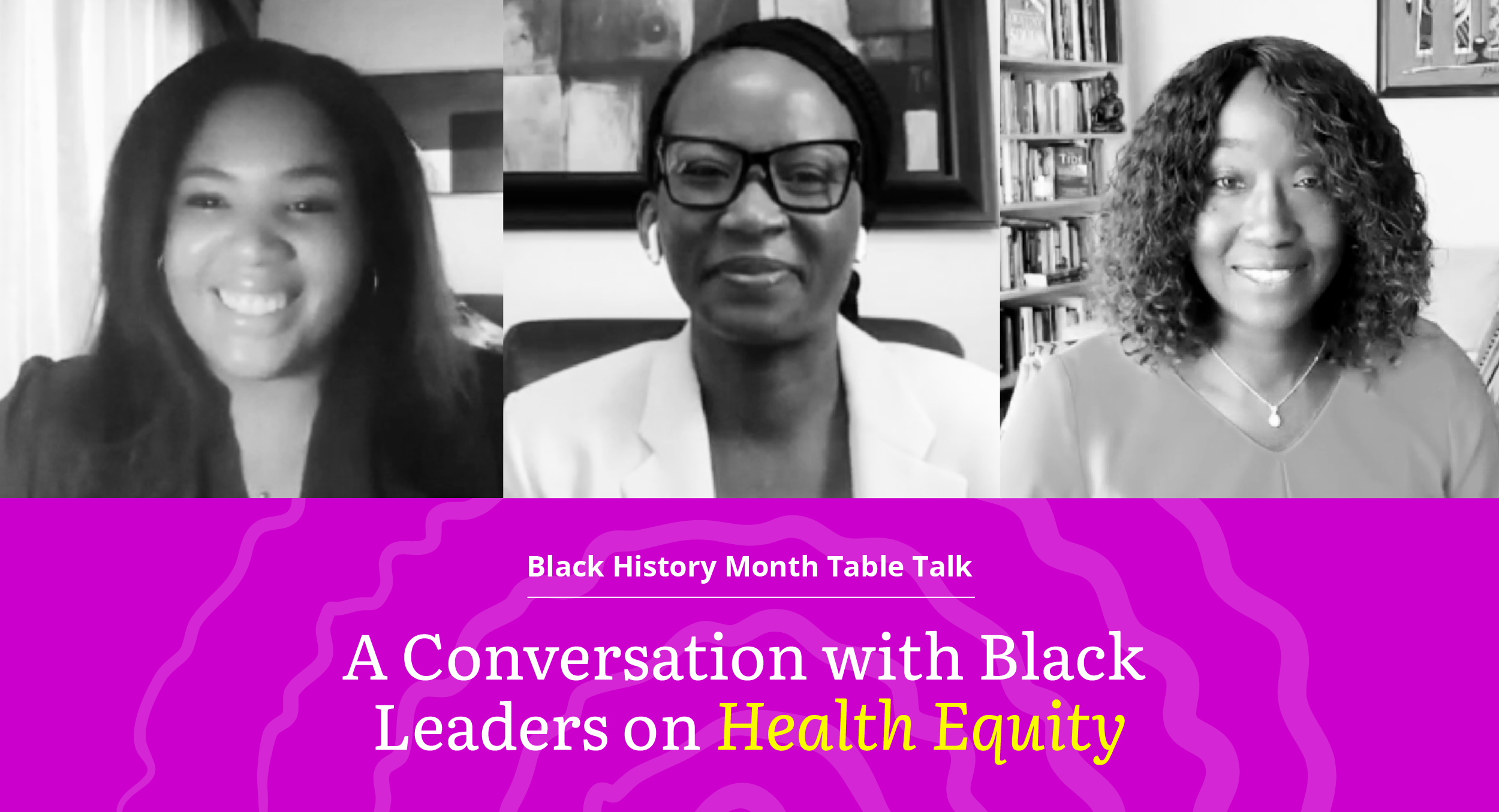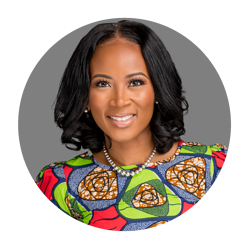Closing Black History Month:
A Table Talk About Health Equity
See how health inequity is a systemic issue — and how you can take action
Published March 21, 2022
While Black History Month has ended, it shouldn’t be the end of the work being done to create real systemic change for Black people.
This year’s theme for Black History Month was Black Health and Wellness, and with it came an opportunity for all of us to acknowledge and learn about the inequities that still exist and brainstorm ways companies and individuals can take action.
At Benevity, it’s tradition to host a table talk at the end of Black History Month. This year, we invited two experts to talk about health equity with a particular focus on women’s health, in a discussion moderated by Janelle St. Omer, Benevity’s Regional VP of Sales.
Meet Our Speakers

Dr. Sylvia Bartley
Senior Director, Health Equity at Medtronic
Ruth Nyaamine
Chief Diversity and Inclusion Officer at Telus
Key Takeaways About Health Equity
Health equity means all individuals have the fair opportunity to reach their fullest health potential. It’s closely tied to access to common social determinants of health, such as education, income and physical environment.
Dr. Bartley shared relevant health data* about Black individuals in the United States, including:
- 2 to 3 times more Black women are likely to die from pregnancy-related causes than white women
- 3 times more Black Americans are likely to die from asthma than white Americans
- 4 times more 35- to 54-year-old Black Americans die from stroke than white Americans
- 7.6% of Black women have heart disease, compared to 5.8% of white women
- 56.8% of Black men and more than 57.6% of Black women aged 20 and older have high blood pressure
Why? Racism can influence how Black people are treated in the healthcare system, and, due to a history of slavery and other economic and social oppression, many Black Americans live in poverty. This means they may live in “sacrifice zones,” areas that are highly contaminated with lead or toxins, polluting their water and air and causing mold to grow in their homes. Sacrifice zones may also be far away from medical facilities or grocery stores with healthy food.
Putting a Personal Face on Health Equity
Nyaamine, who is also Director of Operations at Telus Health, put a face to health inequity by sharing her personal story.
On May 23, 2013, her life changed. At the time, Nyaamine was thriving — she was early in her leadership career and six-and-a-half months pregnant. A week before this date, she’d been experiencing pain and had gone to the doctor but was brushed off. So, when the pain returned on the 23rd, she initially dismissed her concerns.
However, later that day, Nyaamine was admitted to the hospital. Her baby was breech and she had to have an emergency C-section. While she was in the hospital, her personal items and toiletries were moved out of her room, without anybody telling her. Nyaamine found herself in tears. Not over the toothbrush she’d been looking for, but because she realized she didn’t feel safe as a young Black woman in the hospital.
That was just the beginning.
The next morning, physicians informed Nyaamine that her baby had been given someone else’s medication. Again, she felt helpless and didn’t receive answers from medical staff until her maternal aunt, who’s a pediatrician, arrived at the hospital.
While this experience is heartbreaking and may sound unusual, it’s a story many Black women have lived. Like Nyaamine, they may be left wondering, Could this have been different for me or my family?
Between the data and personal stories shared in this session, Benevity-ites walked away with a more solid understanding of what health equity does — and doesn’t — look like. As usual, we closed the session with a few ways to take action.
How Companies and Their People Can Help
Dr. Bartley likened taking on health equity to boiling the ocean: it’s an enormous challenge and often you don’t know where to start.
She says one important thing everyone can do is educate themselves, especially since health equity and the history of racism are not taught — and sometimes even purposefully avoided — in traditional educational settings. She suggests starting with the 1619 Project, which is an ongoing initiative from The New York Times Magazine to re-examine the legacy of slavery in the United States and bring light to topics like health inequity and the racial wage gap.
Nyaamine reminded us how important it is to advocate for ourselves in the healthcare system. This means taking action like speaking up when something feels wrong, requesting a second opinion from another doctor or even filing a formal complaint. Here are a few more ways to practice self-advocacy. She said it’s also important to create spaces at work where people feel safe to speak about their experiences.
Companies and individuals can get more ideas on how to take action all year round in our recent blog post and download our Race Conversations Guide, which includes a step-by-step program for your company to hold necessary conversations about racial equity.
If you’re looking for more ways to empower your people through pro-social actions, connect with us to learn more about our Justice and Equality Missions library.
* BlackDoctor.org, CDC


